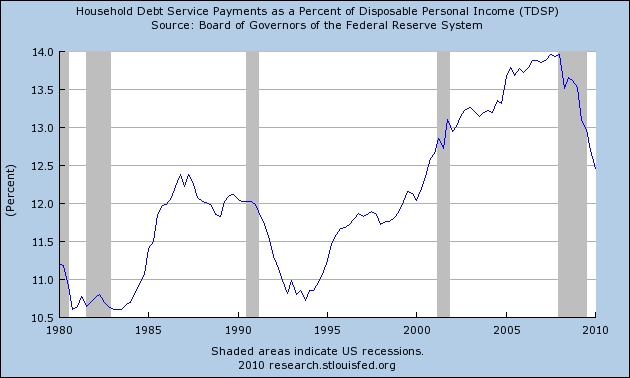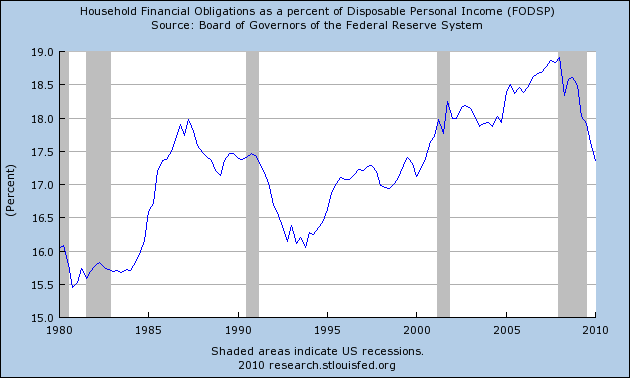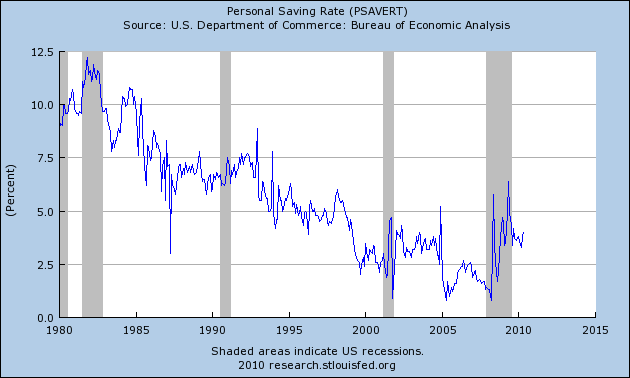In expansions, households are confident and are willing to take on more risk. As they lose confidence and retrench, a recession occurs. Typically this retrenchment goes on until the recovery is definitively established.
The Federal Reserve releases this information on a very lagged basis. On Friday they released household debt information for the first quarter of this year --January through March. It shows that households have continued to aggressively lower their debt and other financial burdens.
First, let's look at household debt obligations (mortgages, loans, credit card payments etc.):

This has fallen from 14% to 12.5% of disposable income -- lower than at any time in the last 10 years and almost halfway back to the lowest point since the series was started at the beginning of the Reagan presidency.
Now, here's the broader measure of financial obligations (including leases, tax and insurance payments, etc.):


This too has fallen over 1.5% and is also lower than than at any point in the last 10 years, and also represents nearly half the increased debt obligations households have taken on since 1980.
Yesterday the savings rate for May was also reported, rising slightly to 4%:


As Bonddad has noted in the last post, household disposable income has also increased nicely in the last several months. Real income has increased as well.
Put these together, and you have a picture of major improvements to household balance sheets -- more income (finally), more savings, and an aggressive paydown in debt. If households continue this pattern for two more years, they will have almost completely repaired their balance sheets to the point before the beginning of the Reagan economic era.
Three years ago I started writing about a "S l o w M o t i o n Bust" -- a nineteenth century style deflationary panic that would unfold over years instead of months, because of the deployment of the entire 20th century economic arsenal designed to avoid a Great Depression style deflationary spiral. While we are in recovery from the 2008 oil spike and financial panic, the "slow motion bust" isn't over because the structural problems remain. Where households are concerned, it looks like it will be another two years or more before their finances are repaired. (Note that this is a similar timeframe to when I suspect that housing prices will be near their bottom).
This is what happens during Kondtratieff winter.